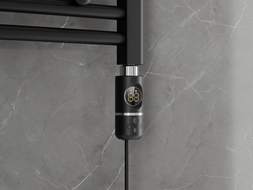
Wall-hung frames for toilets are an ideal solution for any bathroom, regardless of its size, shape, or design style. Since they conceal all structural elements within the wall, they present an attractive alternative to traditional sanitary ceramics. Their use not only influences the aesthetics of the interior but also enhances safety and functionality. How to select the right wall-hung frame model and how to install it correctly?
How to choose a frame for installation?
The most popular and commonly used wall-hung sets include frames designed for wall-mounted toilets and bidets, although you can also find constructions for installing urinals and sinks. They are chosen based on the planned functions, the weight of the installation, and the type of wall on which they will be installed.
In the rich commercial offer of various manufacturers, there are frames for drywall installations, such as those for lightweight walls, e.g., plasterboard, as well as wall-hung frames for heavy installations (wet) for brick walls that require masonry. The decision on which toilet frame model to choose depends on the conditions present in your bathroom. Regardless of the selected model, it is worth remembering that it should have internal insulation made of polystyrene, which effectively dampens unwanted sounds.
Preparation for installing a wall-hung frame
When selecting a wall-hung frame, you should pay attention to several aspects critical for its installation and future use:
- every wall-hung frame should have a technical approval confirming that it has been made in accordance with the applicable standards;
- the frame in lightweight installations should be characterized by the strength to support the mounted ceramics and user. For a toilet frame, the structure must withstand a static load of up to 400 kg, while for a sink, this norm is 150 kg;
- a stable frame for lightweight installations should have at least four mounting points: two to the wall and two to the floor;
- self-supporting frames feature reinforced frames and profiles with a larger cross-section;
- the warranty provided by the manufacturer is important, as its duration indicates the quality and durability of the product;
- it is worth asking how many years spare parts will be available on the market (renowned brands, such as Geberit, offer service for up to 25 years).
Wall-hung frame - installation conditions
The installation conditions for wall-hung frames are the same for all types of ceramic devices, whether installing a toilet bowl, bidet, sink, or urinal. The fundamental rule is to properly level and maintain the vertical orientation of individual frame elements. An inaccurately installed frame can cause discomfort during use and lead to structural irregularities that complicate the installation of drywall, ultimately affecting the aesthetics of the interior. Therefore, the installation of the frame should be preceded by measuring all installed components, ensuring that the sanitary elements are at the expected height.
Some frames come with an orientation height marking of 1 m from the floor, while the vast majority feature adjustable height and level controls. It is worth noting that each model is differently adjusted for compatibility with ceramics, so it's best to opt for a compatible set equipped with all the necessary components for proper installation.
Heavy-duty frame - location and installation method
Heavy-duty wall-hung sets are primarily used in newly built bathrooms equipped with brick walls. They have a slightly heavier construction frame since the weight of the entire structure is transferred to the wall. They have many advantages. They are cheaper than lightweight installations, occupy significantly less space in the bathroom, and allow for complete concealment of the flush tank without the need for additional shelving. However, one must be aware that a malfunction of any component requires breaking into the wall.
So, how should a wall-hung frame installation look? The frame for the wet installation and the flush tank must first be screwed to the wall, and the flush reservoir must be connected to the water supply. Then, the toilet bowl is attached. If we deal with a vertical drain from the flush tank, the frame is clothed on the sides and below, whereas for a side outlet, additional supports can be applied from below to brace the entire structure. After installing the frame in the masonry wall, the entire structure and pipes should be plastered or covered with drywall. Tiles can be glued or another type of finish can be applied on top.
Lightweight frames - their types and advantages
A standard lightweight wall-hung frame has dimensions ranging from 35 to 50 cm in width and from 10 to 25 cm in depth. On the market, there are low installation wall-hung WC sets, where the frame measures 80 or 90 cm, and high ones with frames ranging from 110 to 130 cm. A distinct type includes freestanding self-supporting frames with four-point mounting to the concrete floor. It can easily be concealed behind drywall enclosures. Only the bowl and the flush button remain visible. Such a construction looks tidy, is safe, and stable. Due to its small size, it allows for considerable savings in space, especially in a bathroom with limited area. These features, along with the uncomplicated installation and simple enclosure of the frame, often lead customers to choose this system for their bathroom.






















